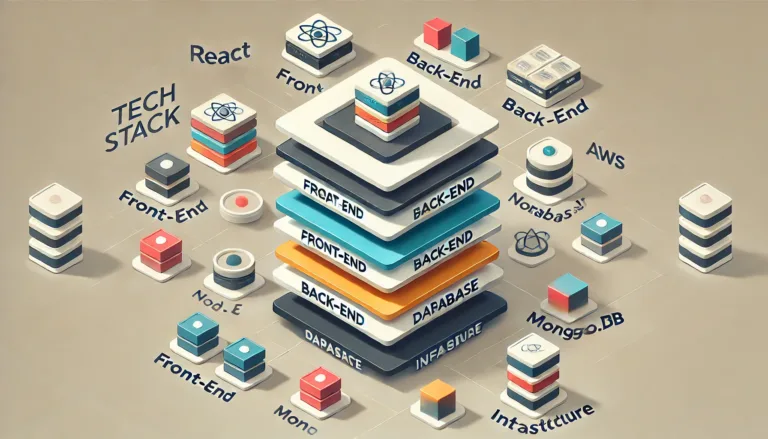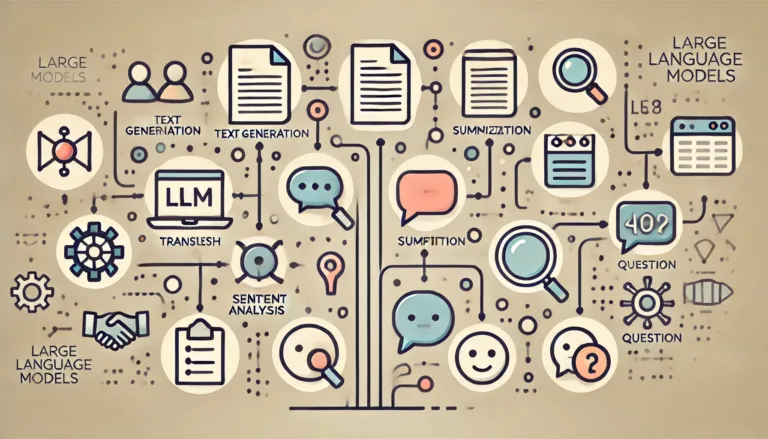Introduction
Imagine a world where machines can not only see but also understand what they’re looking at recognizing faces, detecting objects, and even interpreting complex scenes. This is the power of Computer Vision, a field of AI that is transforming industries from healthcare to security, and beyond. Whether you’re interested in building a facial recognition system or developing autonomous drones, Computer Vision offers a multitude of exciting project opportunities. In this article, we’ll explore 32 project ideas that harness the power of AI to see the world in new ways, divided into beginner, intermediate, and advanced levels.
Beginner-Level Computer Vision Projects
For those who are just getting started with Computer Vision, these beginner projects are designed to help you build a strong foundation in image processing, machine learning, and neural networks.
1. Face Recognition System
- Objective: Develop a basic system that can recognize and identify faces in images or video streams.
- Tools and Technologies: OpenCV, Python, VGGFace.
- Learning Outcomes: Understand feature extraction and basic machine learning models.
2. Image Classification
- Objective: Classify images into predefined categories, such as animals, plants, or everyday objects.
- Tools and Technologies: TensorFlow, Keras, CIFAR-10 dataset.
- Learning Outcomes: Learn about convolutional neural networks (CNNs) and image classification.
3. Object Detection
- Objective: Identify and label objects in a scene, such as detecting cars, pedestrians, and traffic lights in a street view.
- Tools and Technologies: YOLO, OpenCV, Python.
- Learning Outcomes: Understand bounding box regression and non-maximum suppression.
4. License Plate Recognition
- Objective: Recognize and read license plates from vehicle images.
- Tools and Technologies: Python, OpenCV, Tesseract OCR.
- Learning Outcomes: Learn about image preprocessing and optical character recognition (OCR).
5. Face Mask Detection
- Objective: Build a model that detects whether people are wearing masks.
- Tools and Technologies: TensorFlow, Keras, OpenCV.
- Learning Outcomes: Learn about binary classification and real-time image analysis.
6. Gesture Recognition
- Objective: Interpret hand or body gestures for interactive applications.
- Tools and Technologies: MediaPipe, Python, TensorFlow.
- Learning Outcomes: Explore human-computer interaction (HCI) and real-time movement tracking.
7. Image-Based Search Engines
- Objective: Build a search engine that uses images as search inputs.
- Tools and Technologies: TensorFlow, Python, Google Vision API.
- Learning Outcomes: Understand reverse image search and feature matching.
8. Image Super-Resolution
- Objective: Enhance the resolution of images using deep learning.
- Tools and Technologies: SRGAN (Super-Resolution Generative Adversarial Network), Python.
- Learning Outcomes: Learn about image enhancement and GANs.
9. AI for Fashion
- Objective: Use AI to recommend outfits based on photos.
- Tools and Technologies: TensorFlow, Python, Fashion-MNIST dataset.
- Learning Outcomes: Learn about fashion recommendation systems and style recognition.
10. Automatic Image Cropping
- Objective: Automatically crop images to improve composition.
- Tools and Technologies: OpenCV, Python, CNNs.
- Learning Outcomes: Understand image composition and automatic cropping techniques.
Intermediate-Level Computer Vision Projects
Once you’ve mastered the basics, these intermediate projects involve more complex algorithms and larger datasets, offering more real-world applications.
1. Medical Image Analysis
- Objective: Detect diseases from medical images like X-rays, MRIs, or CT scans.
- Tools and Technologies: TensorFlow, Keras, Chest X-ray dataset.
- Learning Outcomes: Understand deep learning in medical data and anomaly detection.
2. AI-Powered Photo Restoration
- Objective: Restore old or damaged photos using AI techniques.
- Tools and Technologies: PyTorch, GANs, image processing libraries.
- Learning Outcomes: Learn about photo restoration and image generation using GANs.
3. Wildlife Monitoring
- Objective: Monitor and identify species in wildlife reserves using AI.
- Tools and Technologies: TensorFlow, Python, camera trap datasets.
- Learning Outcomes: Combine image classification and object detection in diverse environments.
4. Satellite Image Analysis
- Objective: Detect changes in satellite images over time.
- Tools and Technologies: TensorFlow, Python, Google Earth Engine.
- Learning Outcomes: Explore remote sensing, change detection, and environmental monitoring.
5. Emotion Detection from Images
- Objective: Analyze facial expressions to determine emotions.
- Tools and Technologies: OpenCV, Python, FER2013 dataset.
- Learning Outcomes: Learn about emotion recognition and facial feature analysis.
6. Product Recognition
- Objective: Identify products from images for e-commerce applications.
- Tools and Technologies: TensorFlow, Python, product image datasets.
- Learning Outcomes: Explore image-based product recognition and e-commerce solutions.
7. AI-Powered Video Editing
- Objective: Automate the video editing process using AI.
- Tools and Technologies: Adobe Premiere Pro API, Python, deep learning models.
- Learning Outcomes: Learn about video segmentation, scene detection, and AI-driven editing.
8. AI in Fashion
- Objective: Use AI to recommend outfits based on photos.
- Tools and Technologies: TensorFlow, Python, Fashion-MNIST dataset.
- Learning Outcomes: Understand how AI can be applied to style and fashion industries.
9. Real-Time Face Swapping
- Objective: Create an application that swaps faces in videos in real-time.
- Tools and Technologies: Dlib, OpenCV, Python.
- Learning Outcomes: Explore facial feature tracking and real-time image synthesis.
9. Security Surveillance
- Objective: Develop an AI-powered surveillance system to detect intruders.
- Tools and Technologies: OpenCV, Python, TensorFlow.
- Learning Outcomes: Learn about real-time video analysis and anomaly detection.
Advanced-Level Computer Vision Projects
For those with significant experience in Computer Vision, these advanced projects involve cutting-edge research, complex models, and integration with other AI technologies.
1. Self-Driving Car Simulation
- Objective: Simulate a self-driving car’s perception system, recognizing roads, obstacles, and traffic signs.
- Tools and Technologies: ROS (Robot Operating System), Python, TensorFlow.
- Learning Outcomes: Explore sensor fusion, reinforcement learning, and path planning.
2. 3D Object Reconstruction
- Objective: Generate 3D models from 2D images.
- Tools and Technologies: Open3D, PyTorch, 3D CAD software.
- Learning Outcomes: Learn about depth estimation, point cloud processing, and volumetric rendering.
3. Scene Understanding
- Objective: Develop a system that interprets complex scenes in real-time.
- Tools and Technologies: TensorFlow, Python, semantic segmentation models.
- Learning Outcomes: Understand scene segmentation and contextual analysis.
4. AI for Video Games
- Objective: Use AI to generate realistic graphics or enhance gameplay.
- Tools and Technologies: Unity3D, TensorFlow, GANs.
- Learning Outcomes: Learn about AI-generated content and procedural generation in gaming.
5. Augmented Reality (AR)
- Objective: Develop an AR app that overlays digital content onto the real world.
- Tools and Technologies: ARKit (for iOS), ARCore (for Android), Unity.
- Learning Outcomes: Explore AR, computer vision, and real-time data integration.
6. AI for Smart Cities
- Objective: Enhance city infrastructure by analyzing video feeds for traffic management, security, and urban planning.
- Tools and Technologies: Edge AI devices, Python, TensorFlow.
- Learning Outcomes: Understand edge computing, real-time analytics, and urban-scale AI applications.
7. Art Style Transfer
- Objective: Transform images into the style of famous artists.
- Tools and Technologies: Neural Style Transfer, PyTorch, OpenCV.
- Learning Outcomes: Learn about artistic image transformation and style representation.
8. AI-Generated Art
- Objective: Create original artwork using Generative Adversarial Networks (GANs).
- Tools and Technologies: PyTorch, GANs, image generation libraries.
- Learning Outcomes: Explore AI-generated creativity and its applications in digital art.
9. Defect Detection in Manufacturing
- Objective: Develop a system to identify defects in products.
- Tools and Technologies: OpenCV, Python, TensorFlow.
- Learning Outcomes: Learn about industrial image processing and quality control.
10. Environmental Monitoring
- Objective: Track and analyze environmental changes using drone footage.
- Tools and Technologies: Drones, TensorFlow, Python.
- Learning Outcomes: Combine drone technology with AI for environmental conservation.
Conclusion
Computer Vision is a dynamic and rapidly evolving field that offers endless possibilities for innovation. Whether it’s improving healthcare diagnostics, enhancing security systems, or even creating new forms of art, the potential to create impactful AI applications is immense. By exploring these projects across different levels, you’re not just teaching machines to see—you’re enabling them to understand and interact with the world in meaningful ways.
From simple tasks like image classification to complex applications like self-driving cars and smart city infrastructures, each level of project provides not only technical skills but also a deeper appreciation of how AI can transform various industries. As you progress through these projects, you’ll find that the only limit to what you can achieve is your imagination.
Following this exploration of Computer Vision, the next frontier lies in Healthcare AI, where AI is being used to predict diseases, personalize treatments, and transform patient care. After that, we’ll dive into how AI is disrupting the Finance industry, offering project ideas that could revolutionize the way we manage money.alize treatments, and transform patient care. After that, we’ll explore how AI is disrupting the Finance industry, offering project ideas that could revolutionize the way we manage money.









